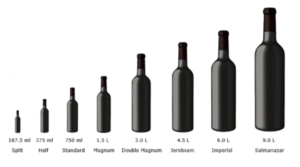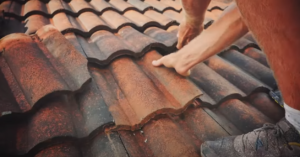5 Essential Tips for Effective Wine Label Design

You’ve accomplished the difficult work of carefully crafting a fine wine, and now comes the exciting part – getting your wine labels planned and prepared to present to the world.
You realize that wine label configuration is a factor in influencing deals. However, how large a factor really is it? All things considered, we realize that when purchasers look for another wine, they ordinarily recognize what they need as far as variety and cost thus the design of the container turns into the essential factor that customers pass by in picking one wine over another. This means the bottle and label design hugely influences your deals. So viable plan is a critical key.

1. Build the brand, weave interest and present quality
There are more than 2800 business wineries in Australia today. It’s a serious market thus your wine label needs to do substantially more than just recognize your grape plantation, variety and vintage. It needs to sell!
An all-around made wine label will attract the possible client and convincingly impart three things; solid branding, an interesting story and a quality for esteem feel.
If these three things are done in a manner that is steady with the idea of the wine, at that point item uprightness is set up. Be that as it may, in the event that the introduction of your wine looks inconsistent and or unprofessional, at that point customers will question the quality and leave it on the rack.
Striking and predictable branding sets up validity, acknowledgment and trust, the weaving of a story about the winemaker and the wine makes a passionate association with the possible client and the quality feel of the labelling (we plan one level over the price point) causes them to feel that they are getting incredible worth.
2. Recognize openings and make an eye-catching design plan
When buying, shoppers will commonly have around ten unique options of variety in each price point. You need your wine label to be attractive in its design, in any chances purchasers and retailers will ignore it.
Your designer ought to have the option to unbiasedly take note of the qualities and weakness of the competition and recognize open doors for a state of contrast. For example, if you are advertising a variety of wine that is moving in development toward a more youthful shopper and you note that your competitors utilize generally classic styled labels, there might be a great opportunity to get the younger end of the market with splendidly shaded, unusual or illustrated labels.
It’s our job as professional designers to utilize our tool kit of shading, shape, contrast, size, balance, mood, style, structure and illustrative strategies to make a label that stands apart with design plan that converts into more bottles in shopping baskets.
3. Realize your objective to hit a bulls-eye
A pleasant looking label is a certain something, however if it doesn’t reflect the flavor of the wine or if isn’t deliberately focused to appeal to its market, at that point it will come up short. For example, you would set yourself up to come up short if you planned a top quality Pinot Noir label that claims generally to more youthful ladies if by far most of Pinot Noir consumers in that price point are more seasoned proficient men!
A major aspect of a designer’s responsibility is to get comfortable with the target client, their gender, commonplace age, occupation, the amount they earn, what they watch, read, drive and like and so on. From that point, educated choices can be made concerning the sort of style, shading palette, text styles and brand story that will straightforwardly interest them.
4. You should comply
Ensure you pick a designer who is up to date regarding the strict wine and food industry guidelines that are set up to illuminate and secure buyers. Required information, for example, liquor rate, volume, contact details and lot number should be there and meet the specifications on size and position. Standardized identifications are likewise significant. They should be set and measured effectively to comply.
Honestly, many wine labels available today don’t completely comply to the guidelines and are in danger of being taken off racks until they have been relabeled accurately.
An expert wine label designer will guarantee your label goes along and will be acknowledged by retailers and keep away from expensive reprints.
5. Everything boils down to an extraordinary completion
Anybody can deliver a standard four-shading measure CMYK rectangular label. Modest? Truly, Energizing? No. It’s truly just a large portion of the job of a quality label. If you need the finished item to be something you can be glad for, you need your designer to have the option to think about the total bundle and advise you on what quality finishing and embellishments are conceivable.
There is a fabulous scope of decisions accessible including; bottle shape, different paper and manufactured stocks and coatings, label shape and custom bite the dust cutting, counterbalanced or advanced printing, ink decision including energetic spot PMS tones (even fluorescents or metallics), foil stepping, spot UV staining, in-press matt or sparkle staining, embellishing or even screen printing straightforwardly onto the containers.
The dubious part is that huge numbers of these completions are difficult to picture or proof, thus you should have the option to trust in a designer who has the relevant experience to guarantee that everything looks awesome when the final product is conveyed.
Read also: Engagement rings, choose a best set or not?





